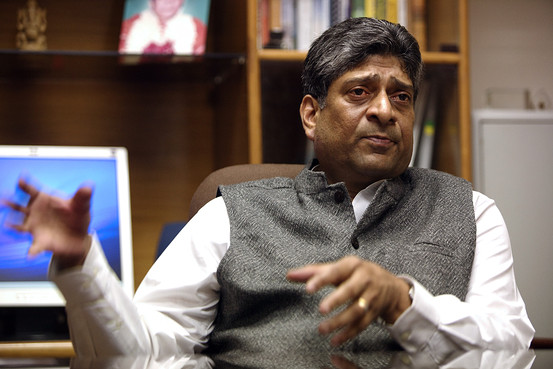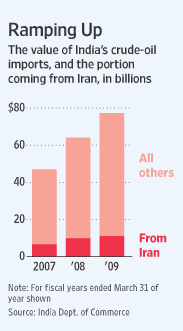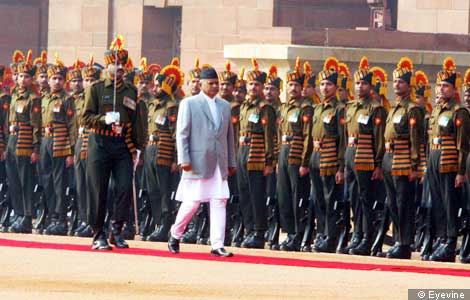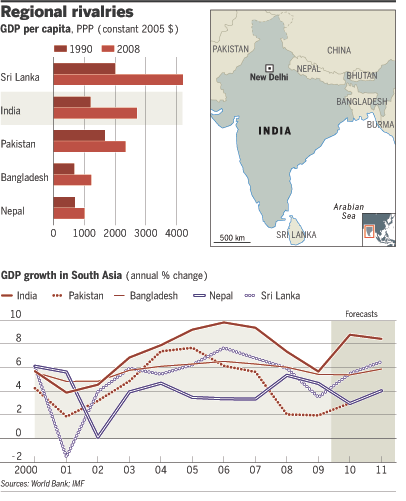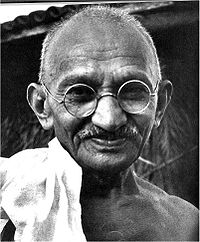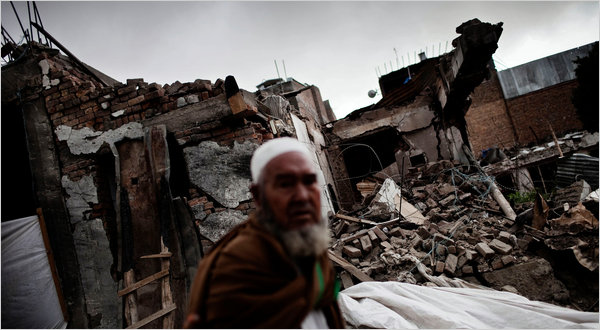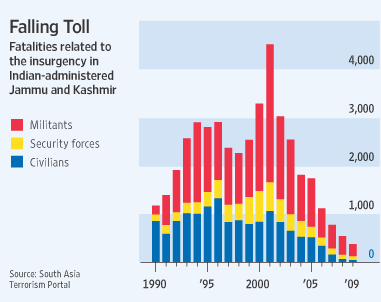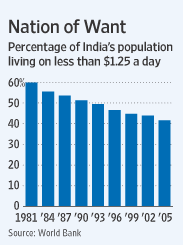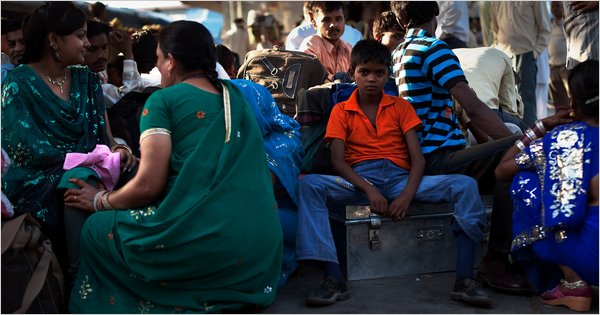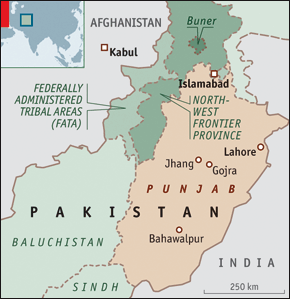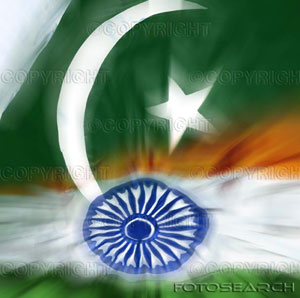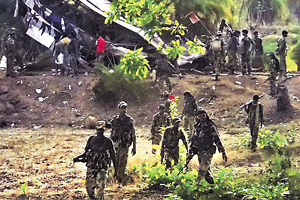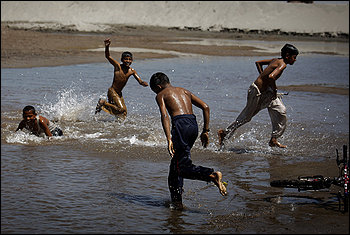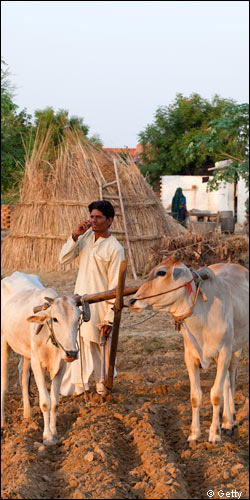 FT full-page analysis by Joe Leahy, who's always good.
FT full-page analysis by Joe Leahy, who's always good.
The start:
In late 2007, an elated Arun Sarin, then chief executive officer of Vodafone, was enthusing in a swanky Barcelona hotel about his latest acquisition – Hutchison Essar, India’s third largest mobile operator.
The UK-based multinational had just paid nearly $11bn (€8.8bn; £7.6bn) for a 67 per cent stake in the group, gaining with one move a front row position in the fastest-growing large telecommunications market.
“We are going to learn as much from India as we are going to take to India,” Mr Sarin, who was born and raised in the country, told the Financial Times in an interview. “Prices there are two-and-a-half US cents a minute, and they make a 35 per cent margin. How do you do that?”
Mr Sarin could not have envisaged it but just two-and-a-half years later, Indian tariffs have collapsed to less than one US cent per minute. Rather than a positive learning experience, the country has provided a hard lesson for Vodafone.
Everybody is just squeaking by in this suddenly fiercely competitive environment, including giant Bharti Airtel. But nobody can ignore the potential: 20m new subscribers per month and a total market expected to reach--get this!--1.1BILLION! by 2015.
Key difference with China: India welcomes foreign ownership.
The big problem: paucity of bandwidth, so spotty coverage and service bedevils the industry. "Incumbent operators claim the situation has been worsened by the government’s decision to sell spectrum cheaply to newcomers and not auction it to the highest bidder."
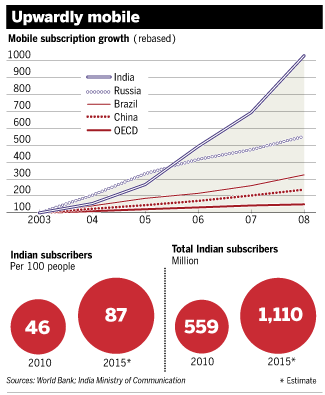 More scope:
More scope:
For India, this mobile phone expansion has significance beyond the immediate telecoms industry. It has been touted as the biggest – some say only – spectacular infrastructure success yet, a beacon of what can be achieved in a country that needs to build $1,000bn worth of roads, power plants, ports and airports over the next five years if it is to realise its dream of being a leading global economic power.
The telecoms revolution has also become one of the country’s primary drivers of development. Millions of urban poor and farmers, from Calcutta rickshaw pullers to Himalayan yak herders, now carry mobile phones. The improved communications enables them to do more business and gives them better access to services, such as healthcare. Every 10 percentage point increase in mobile penetration produces 0.81 per cent economic growth, according to a 2009 World Bank study.
“It’s an infrastructure rollout of a magnitude that has not been seen in the global economy for a long time,” says one former senior industry executive. He says the biggest operators in India in the past 12 months have installed as much network as Germany did in the past 15 years. “It’s something that vastly exceeds the rolling out of electricity, or the rolling out of highways in the 1950s in the United States.”
The great obstacle, as usual, are the rules:
But the regulatory system that gave rise to this expansion now finds itself accused of trying to kill the goose that laid the golden egg. Analysts accuse the government of implementing a series of policy switches in the past two-and-a-half years that have led to an influx of new entrants and a scarcity of spectrum – the precious airwaves on which mobile calls are transmitted. In the communications technology era, spectrum is the new black gold, in short supply all over the world but particularly in India, where the defence ministry still controls many frequencies.
The level of international criticism of India’s telecoms policy regime is worrying for a government that prides itself on its ability to court foreign investors at high-profile gatherings such as the World Economic Forum in Davos. One investment research company referred New Delhi’s recent policy actions as “regulatory basketcasery”. In a note on Vodafone, Bernstein Research said: “If you were looking for emerging market exposure to mobile growth, India was probably not a great choice.” The country, it added, “is a competitive mess, and its regulation grows more capricious and nonsensical by the day”.
Such charges are vehemently denied by regulators . . .
Yet no one can dispute that the sector is overcrowded. Some argue that its problems date back to January 2008, when the government sold eight new mobile service licences bundled with spectrum at 2001 prices on a first-come, first-served basis rather than through a bidding process. This sale is now being investigated for allegations of “serious irregularities” ...
The awarding of so many licences ushered in an era of competition even more intense than that witnessed by Mr Sarin. Many of the newcomers sold large stakes to cash-rich foreign operators . . .
As the new entrants and their international partners began operating, a vicious price war set in. Call prices declined rapidly. Telenor’s local unit, Uninor, recently announced a plan that offers calls for as little as Rs0.20 per minute.
Consumers have welcomed the price war but it has had a catastrophic effect on revenue in the industry. Among large operators, average monthly revenue per user as of March 31 fell up to 37.9 per cent compared with a year earlier, according to Macquarie Securities.
Even as the price war bit into profits, the government launched its long-delayed auction of spectrum for third generation mobile services, which allow subscribers access to the internet on their phones. The auction process was lauded as fair and open but some operators complained that the fact that there were only three pan-India allocations on offer to 15 operators drove up prices artificially. The cost of an allocation soared to more than $3.6bn – about 75 per cent more than the highest analyst estimates before the sale ...
Leading operators such as Vodafone and Bharti balked at paying the full cost of a pan-India allocation, and instead ended up with a patchwork of networks in the more important regions. Even in the areas they did win, the allocation was not enough to offer a meaningful increase in the advanced data services typical of 3G, such as internet television and video-conferencing.
“Operators have paid a huge amount of money ostensibly for 3G purposes but in reality this will be used to fill the gaps on 2G networks,” said Rahul Matthan of Trilegal, an Indian law firm.
For India, this could be a blow. The country’s internet penetration, which the most optimistic estimates put at about 70m users, is one of the lowest among the world’s fast-growing emerging markets.
Given the difficulty of building ground-based infrastructure because of high population density, efficient implementation of 3G might have offered India the chance to leapfrog into the internet age. For the government, short-term gains from the sale of resources such as spectrum have to be balanced against the need to create incentives for investment in communications. World Bank calculations show that increasing broadband penetration generates economic growth to an even greater extent than mobile penetration.
Many experts argue that consolidation is the only long-term solution. Existing rules seriously curb mergers and acquisitions.
Tumultuous boom-and-bust days of network/biz empire-building. Fascinating to watch and impossible for all these companies not to engage.
Remember the pot of gold that lies at the end of this rainbow: the ability to process all the biz intell that flows through these mobiles.
Excellent piece. Serious education. I can't ever see a future where I'm not subscribing to FT.
 Monday, August 2, 2010 at 12:02AM
Monday, August 2, 2010 at 12:02AM 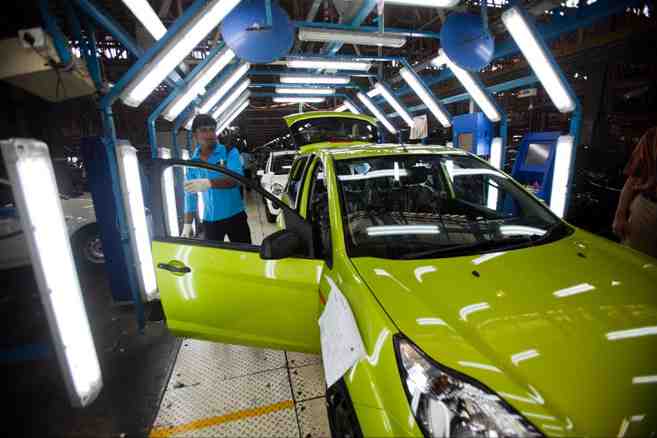 WSJ story on “new Detroit” arising in Chennai, a major metro in India’s south. Hyundai, Ford, Nissan/Renault, Mercedes are all there, cranking vehicles.
WSJ story on “new Detroit” arising in Chennai, a major metro in India’s south. Hyundai, Ford, Nissan/Renault, Mercedes are all there, cranking vehicles.








